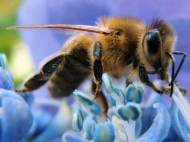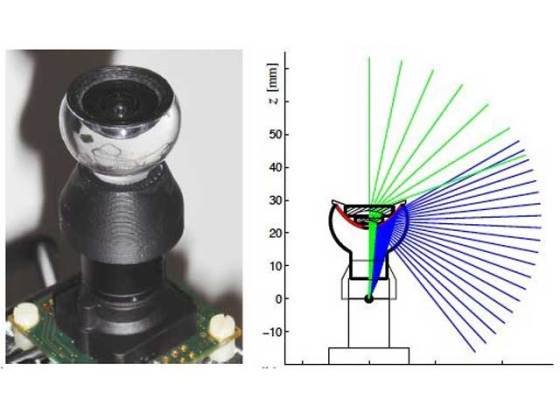Biomimicry of honeybee eye could improve robotic vision
 The capabilities and behavior of bees have inspired scientists in various fields as swarm movement and cooperation. Neurobiologists from Bielefeld University, Germany, have been researching the computational mechanisms that allow the nervous system to extract behaviorally relevant information from the retinal input and to use this information in behavioral control.
The capabilities and behavior of bees have inspired scientists in various fields as swarm movement and cooperation. Neurobiologists from Bielefeld University, Germany, have been researching the computational mechanisms that allow the nervous system to extract behaviorally relevant information from the retinal input and to use this information in behavioral control.
In their previous research, the folks from Department of Neurobiology and Center of Excellence ‘Cognitive Interaction Technology’ from Bielefeld University focused on flies but since 2007 they widen their research with the honeybee as an experimental model system. Lead researcher Wolfgang Stürzl and his colleagues wanted to capture the largest possible wide-angled view of the world they could, because they wanted to use a single camera in order to minimize the weight of a small robotic aircraft.
Consisting of a light-weight mirror-lens combination attached to a USB video camera, the artificial eye manages to achieve a field of vision comparable to that of a bee. In combining a curved reflective surface that is built into acrylic glass with lenses covering the frontal field, the bee eye camera has allowed the researchers to take unique images showing the world from an insect’s viewpoint.
To do this, the team used a so-called catadioptric imaging system, which captures an image using both mirrors and lenses. A dome-shaped mirror, with a lens at its centre, was placed 20 millimeters in front of the camera’s charge-coupled device (CCD) image sensor chip, with its convex surface facing towards the camera. The lens focuses light from in front of the camera onto the CCD to create an image with a 110-degree field of view. At the same time, the convex face of the mirror captures a reflection of the world behind the camera and focuses this light onto the CCD, widening the field of view to 280 degrees.
In the future, the researchers hope to include UV to fully reflect a bee’s color vision, which is important to honeybees for flower recognition and discrimination and also polarization vision, which bees use for orientation. They also hope to incorporate models of the subsequent neural processing stages.
Despite the limitations of their model of the spatial resolution of the honeybees compound eyes, the researchers are confident that it is useful for many purposes, e.g. for the simulation of bee-like agents in virtual environments and, in combination with presented imaging system, for testing bee-inspired visual navigation strategies on mobile robots.










Leave your response!